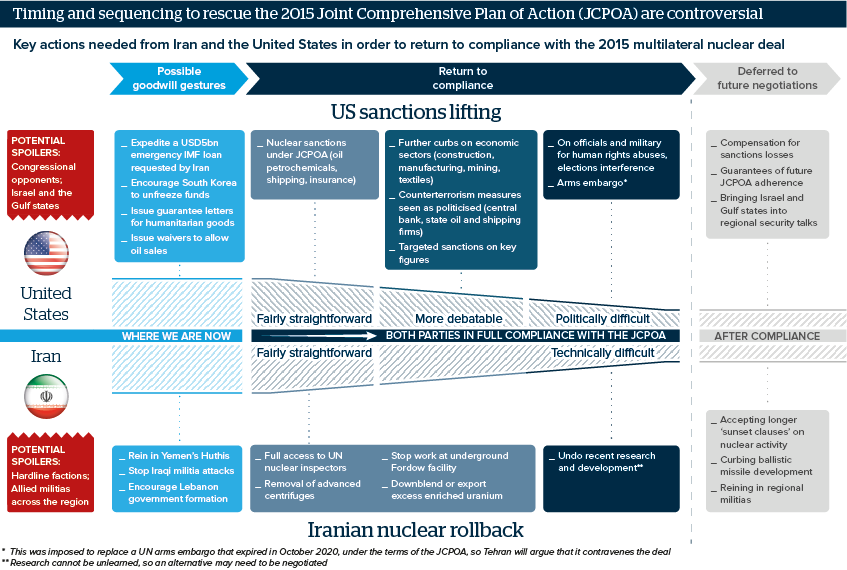An Iran-US JCPOA return requires complex choreography
To return to nuclear-deal compliance, Washington has to lift sanctions and Tehran has to roll back nuclear development
Source: Oxford Analytica; the Joint Comprehensive Plan of Action (2015); US OFAC
Outlook
Tehran today stepped further away from JCPOA compliance, announcing that it would no longer implement the Additional Protocol, which allows snap inspections by the International Atomic Energy Agency (IAEA). This follows parliamentary legislation designed to put pressure on US President Joe Biden to move quickly in removing the sanctions imposed by his predecessor Donald Trump in contravention of the agreement, which are weighing heavily on Iran’s economy.
However, Biden faces domestic risks from the anti-Iran lobby. Meanwhile, campaigning begins in April for Iranian presidential elections in June, likely to see a much more conservative and anti-Western president take office in August.
Impacts
- European countries will react strongly against Tehran’s new constraints on the IAEA, but will also redouble efforts to coordinate a deal.
- Other JCPOA signatories Russia and China will broadly support Iran’s maximalist line on US sanctions-lifting commitments.
- If Iranian oil exports are resumed, output could return relatively quickly towards 4bn barrels/day, putting downward pressure on prices.
- Even if talks collapse, Tehran is highly unlikely to resume efforts to build a nuclear weapon, risking isolation and military action.
See also
- Russia and post-Netanyahu Israel will seek continuity - Jul 22, 2021
- US-Russian summit will not be a watershed moment - May 19, 2021
- Staged Iran-US nuclear deal return will be challenging - Feb 4, 2021
- Middle East sanctions will mostly misfire - Nov 19, 2020
- More graphic analysis
